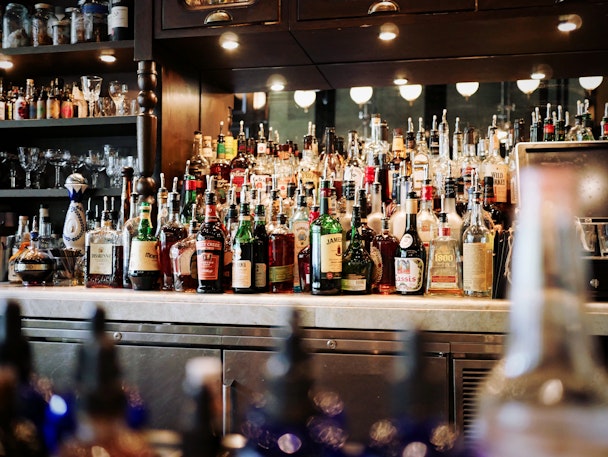Why failing to embrace digital will form sour grapes for winesellers
For many of us, the words 'socialising' and 'drinking' are so similar as to be practically synonymous. Catching up with friends, going for dinner with your partner, attending a family meal, all occasions that we often associate with having a drink.

Yet despite this, sections of the alcohol industry are struggling. Consumption is down and customer preferences have changed dramatically, particularly among younger drinkers.
Back in October, Return spoke at a wine conference in Italy. It was due to be a fairly straightforward talk about traditional vs digital PR, but we soon discovered that the wine retailers and merchants we spoke to all had a very similar problem. In a climate where sales of wine products are falling significantly, they knew they needed to change their marketing strategies.
Gin and craft beer are great examples of how to do alcohol marketing in 2017 as we see wine and many other types of alcohol lagging behind. That prompted us to produce a report examining the marketing challenges faced by wine retailers and merchants, and how they can be overcome. Here are some of our findings:
Falling sales and shifting trends
Put simply, Brits are spending less on alcohol. The latest Family Spending Survey from the Office for National Statistics shows that households are now spending an average of £11.40 per week on alcohol and cigarettes, down from nearly £20 in the early 2000s.
What’s more, alcohol consumption has been on a downward trajectory over the past 15 years. Average consumption of beer by UK adults has dropped from 93.9 litres in 2003 to 67.2 in 2015, according to Statista. Furthermore, figures from the Wine and Spirit Trade Association show that the volume of still wine sold fell by 2% in the year to April 2016.
Statistics such as these demonstrate a shift in tastes. Prosecco, whiskey and craft beer have all enjoyed a surge in popularity, with sparkling wine sales climbing by 18% between May 2015 and April 2016 . However the size of the market is far smaller than still wine.
Customers showing less loyalty
As well as a drop in sales, wine sellers are struggling to cope with a decline in brand loyalty. Consumers (particularly millennials) are increasingly willing to try out new or alternative brands of drink, a trend that is demonstrated by UHY Hacker Young reporting a 65% increase in the number of UK breweries between 2010 and 2015. In this changing marketplace, still wine is being left behind.
And it’s not just our drinking preferences that are changing – demographics are shifting too. As more younger audiences discover and start consuming wine, they are becoming the leading customer profile. In fact, Wine Inspector found that Millennials drank 42% of all the wine consumed in the US even back in 2015,more than any other age group.
Changing purchase considerations
As we move into an increasingly fractured marketplace, consumers are looking past product-led purchase considerations to differentiate the many choices on offer, and add a deeper meaning to their buying decisions.
This means taste has become just one factor influencing our alcohol purchases, alongside a variety of micro and macro considerations, such as:
- Quality of ingredients
- What the brand is associated with
- What the people around you are drinking
- Whether or not the product is ethically produced
With such a complex range of factors affecting the drinks we purchase, it’s no longer enough for wine retailers and merchants to promote their products on taste and style. This has left many alcohol brands struggling to realign their traditional USPs of flavour, intensity and pallet with the modern consumer’s preferences.
The solution? Focus on storytelling the flavour
The rise of mobile and the ‘always on’ shopper has fractured the traditional consumer journey into hundreds of real-time, intent-driven interactions – something Google calls micro-moments. The opportunity is sizeable, with a study from Dscout finding that the average person interacts with their phone 2,167 times a day.
To understand how these micro-moments work, consider the following examples: a 25 year old takes a “What Cocktail Are You?” quiz on BuzzFeed, or a 63 year old searches Google for “best retirement gifts”. These behaviours are very different from the old-style purchase funnel, but they are having an increasing influence on consumers’ buying behaviours.
Tapping into this opportunity requires brands to focus on storytelling rather than selling. To tell your story, your brand must be on social media – even if just through your customers’ mentions rather than a verified account. Even consumption no longer happens in silence. Consumers’ drinking activities have moved online through shared posts, photos, check-ins, snaps, reviews and feedback. Consumers, especially millennials, are more willing to try new or alternative brands of drink. Purchase considerations have shifted from product features (type of grape, taste) to external considerations (social situation, brand positioning, ethical produce.)
To capitalise on these trends, brands need to focus on storytelling – creating moments of consumption and brand associations on and offline to drive purchase decisions.
Want to find out more? Download Return’s free report, “The Role of Online & Mobile in Alcohol Purchasing Decisions”

